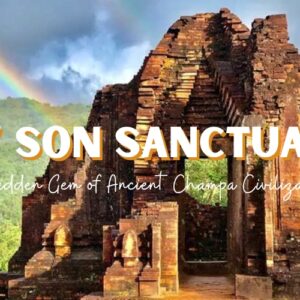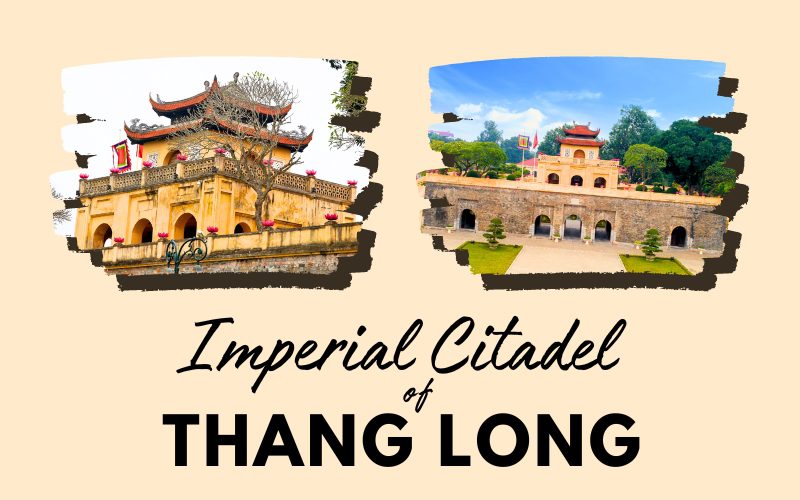
The Imperial Citadel of Thang Long is a complex of relics associated with the history of Thang Long Citadel, Hanoi. This massive architectural construction was built by the emperors in many historical periods and has become the most significant relic in the system of Vietnamese monuments. Don’t miss out on this famous attraction if you visit Hanoi.
Essential Information for Tourists
Location of Imperial Citadel of Thang Long
The Imperial Citadel of Thang Long is located at No. 19C, Hoang Dieu Street, Ba Dinh Ward, Hanoi. Situated right in the heart of Hanoi, this place is easy for tourists to get here and explore the fascinating grounds.
Opening Hours and Entrance Fees
- Opening hours: The historical site is open every day for visitors to admire the massive ancient architecture, operating hours from 8:00 AM to 5:00 PM.
- Entrance fee: Tourists visiting the Imperial Citadel of Thang Long have to pay an entrance fee of 30,000 VND per person. A 50% discount on this fee is applied for Vietnamese students over 15 years old with their student cards and Vietnamese elderly people over 60 years old with their ID cards. Children under 15 years old and people with meritorious services to the Vietnam Revolution are completely free of entrance tickets.
Regulations
- Follow the tour guide map in the relic area.
- Dress neatly and politely.
- Weapons, explosives, flammables, and toxic substances are strictly banned from the relic.
- Uncultured acts such as swearing, writing/drawing on the wall/tree, or causing disorder in the relic area are strictly banned.
- Flycams are not allowed at the heritage site.
You can get more information by accessing the official website of the Imperial Citadel of Thang Long here.
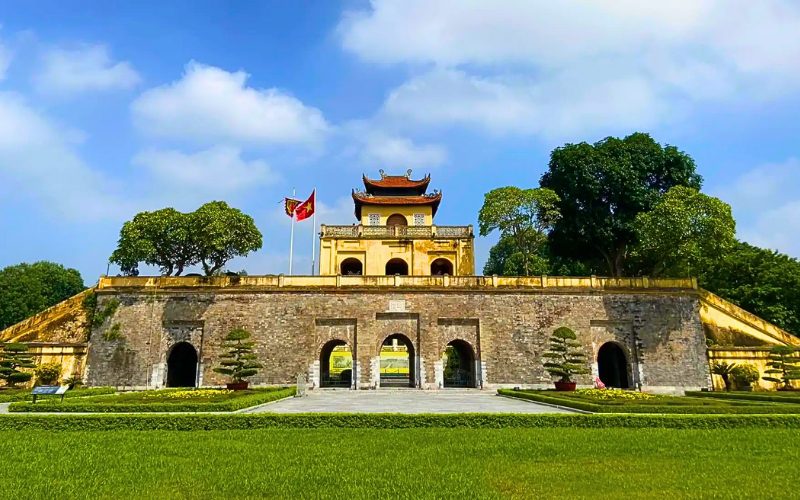
Imperial Citadel of Thang Long
History of the Imperial Citadel of Thang Long
In December 2002, experts excavated on a total area of 19,000 m² at Ba Dinh District, the political center of Hanoi. This was the largest archaeological excavation in not only Vietnam’s national scale but also South East Asian region scale. It was this excavation that revealed traces of the Imperial Citadel of Thang Long in a historical process spanning 13 centuries with stacked monuments and cultural layers.
The unique architectural vestiges and millions of precious artifacts have partly recreated the historical period from the era when the Northern was under the domination of the Sui and Tang dynasties (7th to 9th centuries) to the dynasties of Ly, Tran, Le, Mac, and Nguyen (1010-1945) and against-French stage.
In 2010, the Imperial Citadel of Thang Long was identified as a World Cultural Heritage by UNESCO.
The Imperial Citadel of Thang Long, together with the archaeological relic at No. 18 Hoang Dieu Street, are typical heritage and cultural complexes, reflecting the historical progress of Vietnam during the 13 centuries (from the 11th century to the 11th century). Through many ups and downs, the ancient Thang Long citadel no longer has massive fortresses or vermilion towers, but the vestiges and traces left over have contained great historical and cultural value. These are proofs of the history of building and defending the country of an independent Vietnam over the years.
Relic Areas in the Imperial Citadel of Thang Long
Archaeological Relic at No. 18 Hoang Dieu Street
This relic area consists of four different floors. The bottom floor is the eastern part of Dai La Citadel under Cao Bien, Tang Dynasty. The second floor is the palace of the Ly and Tran dynasties. Next is a central part of the eastern palace of the Le Dynasty, and on top is a part of the center of the 19th-century Hanoi provincial citadel. Your ticket already includes the entrance to this area, so don’t miss the chance to see artifacts from centuries of Vietnamese history.
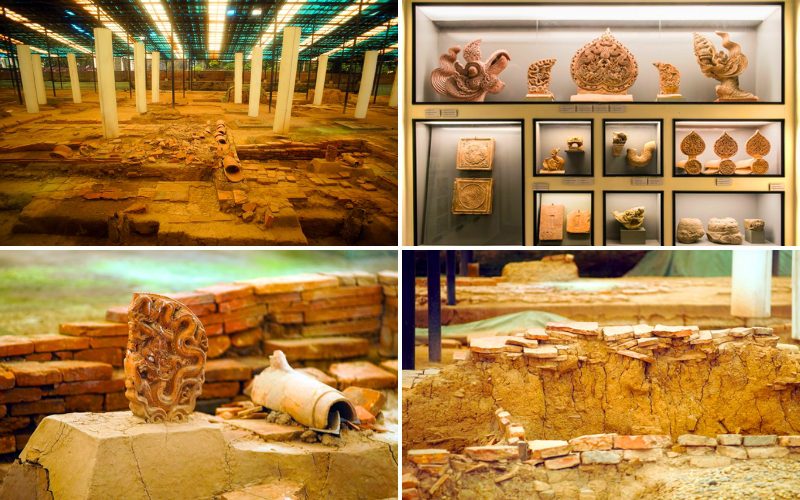
Artifacts in the Archeological Site
Hanoi Flag Tower
Hanoi Flag Tower was built in 1812 during the reign of King Gia Long at the same time as the Vauban style of Hanoi was built. The flag tower is 60 m high, including the base, the pole body, and the watchtower. The square base occupies an area of 2007 m² and consists of 3 gradually increasing levels. Each level has a flower wall with a surrounding pattern. From the ground to the foot of the second level, you have to climb 18 steps on the east and west sides. If you want to go from level 2 to level 3, you must climb 18 steps at the east and west doors. The third level has four gates East, West, South, and North.
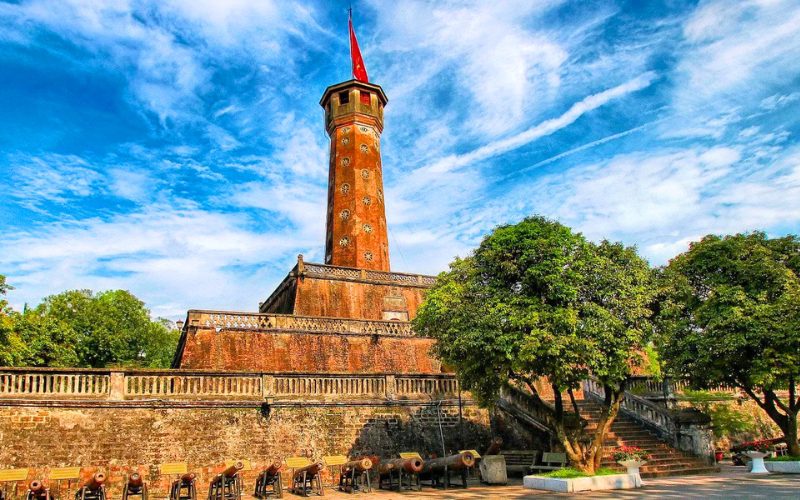
Hanoi Flag Tower
Doan Gate
Doan Gate is the archway leading to Kinh Thien Palace. It consists of five smaller gates built of stone. Outside is the Tam Mon Gate. Around 1812 – 1814, King Gia Long ordered to destroy Tam Mon Gate to build Flag Tower. In 2002, Vietnamese archaeologists were allowed to dig inside Doan Gate and found the “ancient carriageway” of the Tran dynasty, using many Ly bricks. If the excavation continues, it will be possible to see the whole road from Doan Gate to Kinh Thien Palace in the north and the southwest gate of Hanoi.
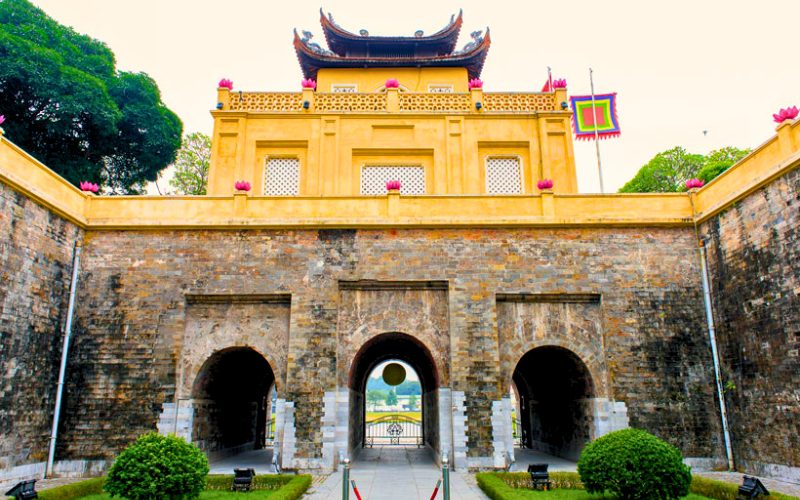
Doan Gate
Kinh Thien Palace
Kinh Thien Palace is the central relic in the overall historical landmarks of Hanoi’s ancient citadel. The vestiges of Kinh Thien Palace are now just the old grounds. In the south of the power platform is a railing over one meter high. A system of steps with large box stone slabs was built in the central south direction of Kinh Thien Palace. The platform consists of 10 steps, four stone dragons divided into three equal ways to form a dragon shelf. Four stone dragons were created in the 15th century during the Le Dynasty. Kinh Thien Palace stone dragon sculpture is a masterpiece of architectural and artistic heritage, representing the early Le Dynasty sculpture art. The Kinh Thien Palace background and the pair of adoring dragons partly reflect the grandiose scale of the old Kinh Thien Palace.
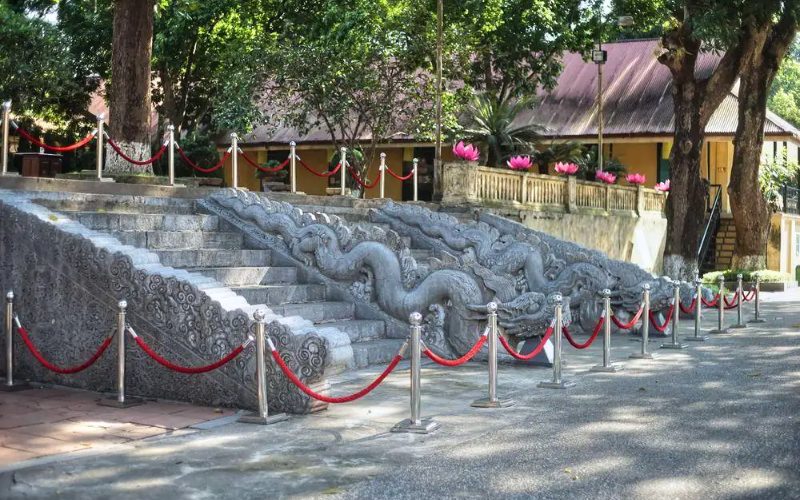
Steps to Kinh Thien Palace
D67 Building
D67 Building is where the Politburo and the Central Military Commission made historic decisions, marking the milestones of the Vietnamese revolution. This includes the 1968 Tet Offensive, the 1972 General Offensive, the 1975 General Offensive, and especially the Ho Chi Minh campaign.
The D67 Tunnel is situated under the courtyard connecting Kinh Thien Palace and D67 Building for the Politburo and the Central Military Commission. The entire underground tunnel system is connected with generator power lines. The information system, communication, logistics, and food are all adequate.
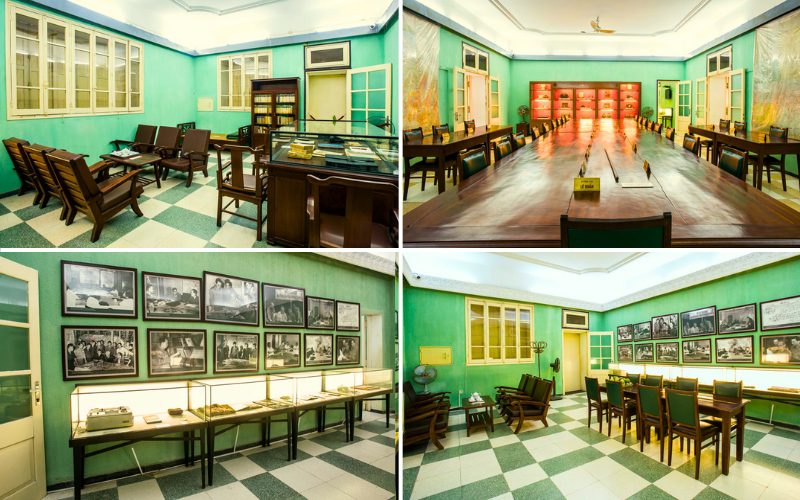
The furniture inside D67 Building
Hau Lau
Hau Lau is a building constructed behind the architectural cluster Kinh Thien Palace. Although it is behind the palace, it was built in the north with the intention of feng shui to keep the north of the palace, so it is called Tinh Bac Lau (North-calming Building) and also called Hau Lau (the Behind Building). This place is also known as the Princess Building as it used to be the resting place of the palace ladies in the convoy escorting King Nguyen to the North Citadel.
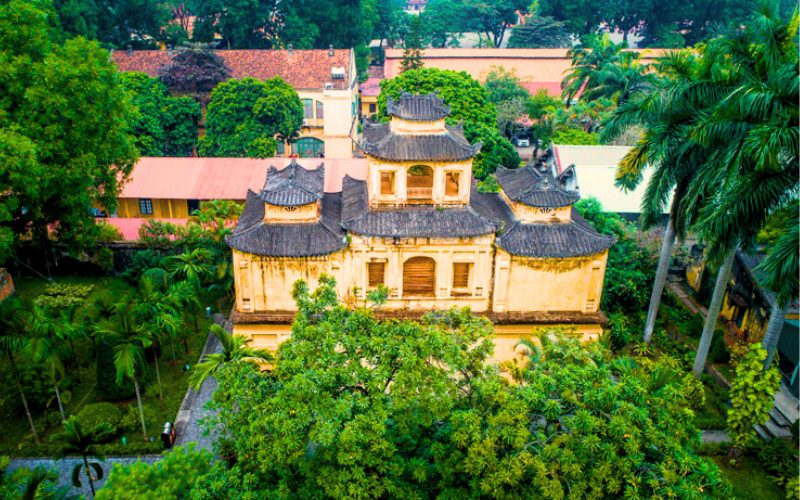
Hau Lau (The Behind Building)
North Gate
Cua Bac (North Gate) is one of the five gates of the ancient Hanoi Citadel under the Nguyen Dynasty. When the French destroyed the Hanoi Citadel, they kept the North Gate because there were two cannon marks left by the French cannons fired from the Red River in 1882. Today, on the city gate is the place to worship two governors of Hanoi, Nguyen Tri Phuong and Hoang Dieu.
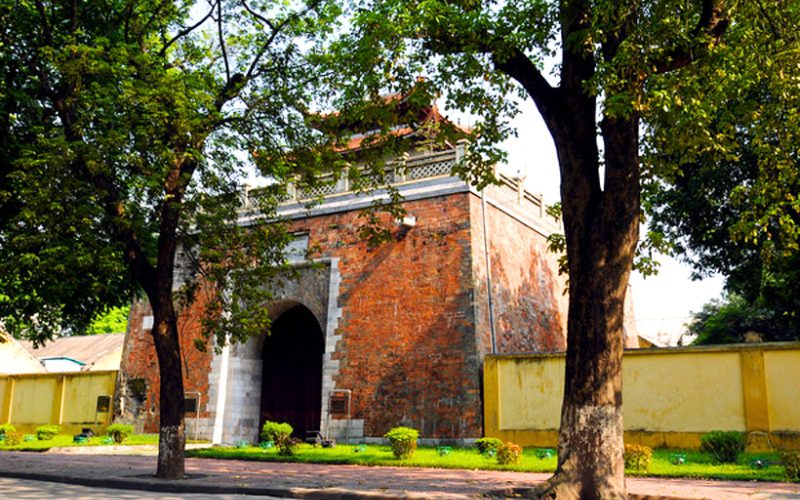
North Gate
Night Tour: Decoding the Imperial Citadel of Thang Long
Unlike other usual tours, the night tour “Decoding the Imperial Citadel of Thang Long” will be an exceptional experience for you, bringing new and impressive feelings.
The journey to experience the night tour lasts about 1.5 hours, with a route starting from Doan Gate, the former residence and working place of the king. Here, visitors experience the space of the old Imperial Citadel, enjoy the royal dance right on the unique archaeological vestiges, and continue to admire the precious artifacts and antiquities found in the Imperial Citadel of Thang Long in the display house with the theme “Thang Long Hanoi – A thousand years of history from the ground.” The last attraction in the night tour itinerary is Archaeological Relic at 18 Hoang Dieu Street. You can enjoy millions of artifacts that are over 1300 years old.
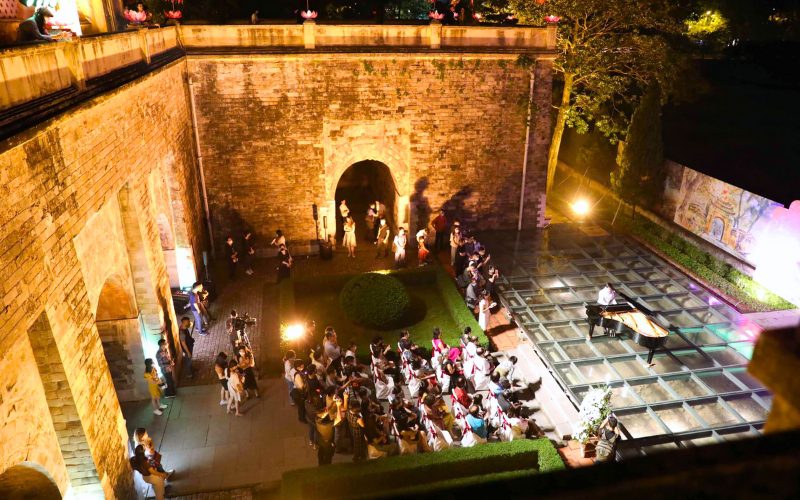
Night Tour
At the end of the tour is the game “Decoding the Imperial Citadel of Thang Long” for all visitors. Accordingly, some typical artifacts of the Imperial Citadel will be shown by laser on the foundations of archaeological remains or the ancient river for visitors to learn and answer. Interesting details and decoding hints will be revealed in turn during the tour.
Places to Visit Near the Imperial Citadel of Thang Long
Temple of Literature
If you want to discover some more ancient destinations in Hanoi, the Temple of Literature will be an ideal place to explore after the Imperial Citadel of Thang Long. You will find it convenient to get to the Temple of Literature as this place is only about 1 kilometer away from the Citadel. The Temple of Literature is identified as Vietnam’s first national university and a symbol of knowledge and learning.
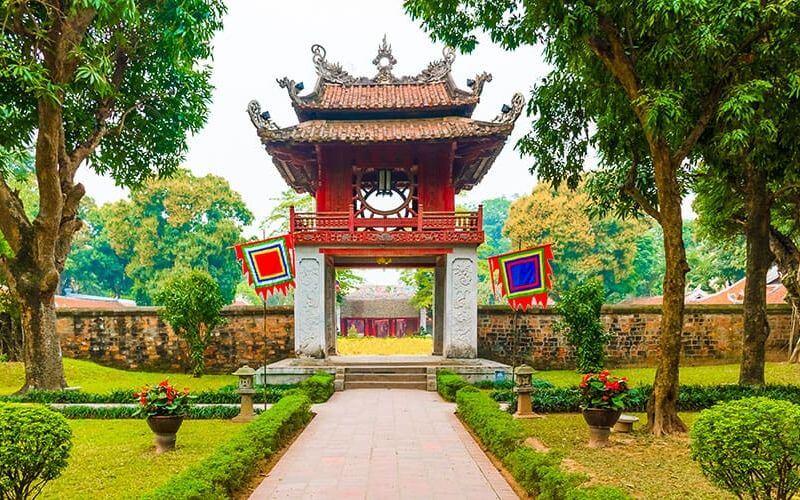
Temple Of Literature
Hoa Lo Prison Relic
Another attraction nearby the Imperial Citadel of Thang Long that you should visit is the Hoa Lo Prison Relic. You would find several significant stories of Vietnam’s past by visiting this site. Don’t miss the opportunity to have a comprehensive view of the harsh realities that Vietnamese political prisoners had to experience.
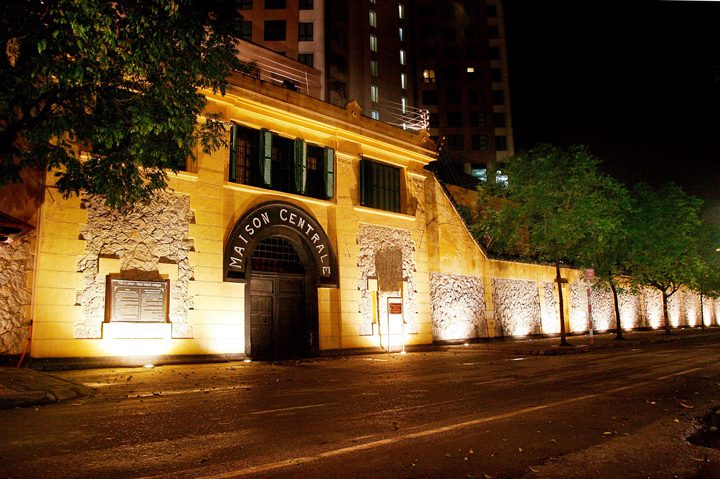
Hoa Lo Prison in Hanoi
Getting to the Imperial Citadel of Thang Long
Taxi/Grab/Private Car
Among several options to get to the Imperial Citadel of Thang Long, a Taxi or car booked via a ride-hailing app is the easiest for every visitor to arrive at this destination. By simply providing the address, the driver will transport you to the Citadel in no time.
However, if you prefer a more comfortable and personalized option, you can think of renting a car with a private driver. The driver is always ready to bring and pick you up from your desired destination, at any time you wish. If you are interested in this service and need further information, just contact us. We are always pleased to help you.

Private car rental service
Walking
You can also walk to the Imperial Citadel of Thang Long if your accommodation is near this site. Having a walk in the heart of Hanoi and enjoying the peaceful atmosphere is also a great option to consider.
The Imperial Citadel of Thang Long is a place that you should never miss out on when visiting Hanoi. This site will definitely surprise you with its massive architecture and rich history. If you want to stop by more attractive destinations in lovely Hanoi, take a look at our Hanoi city tours because they will never disappoint you.

